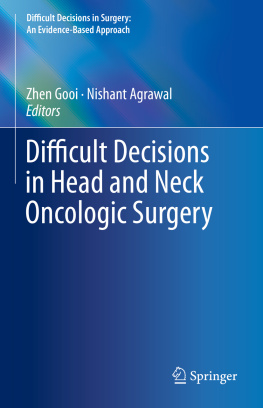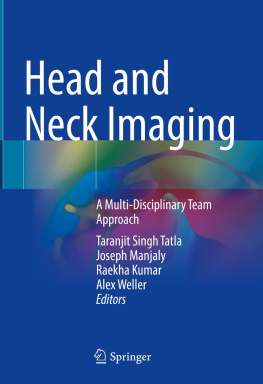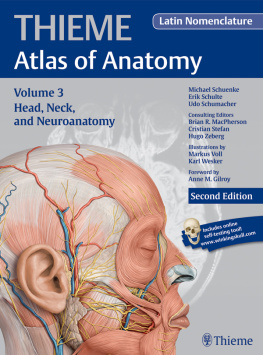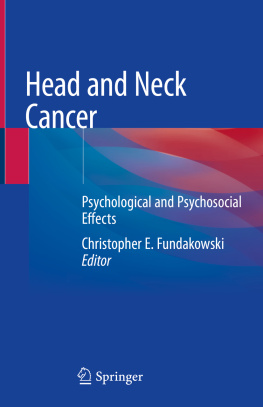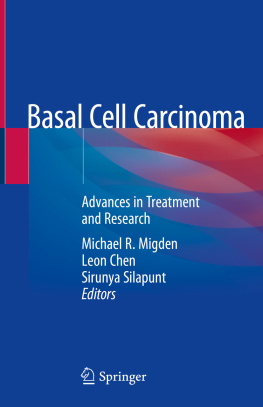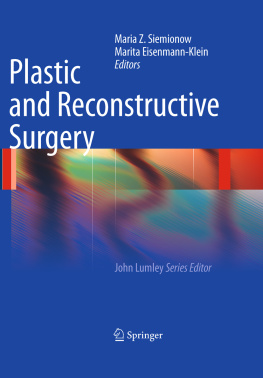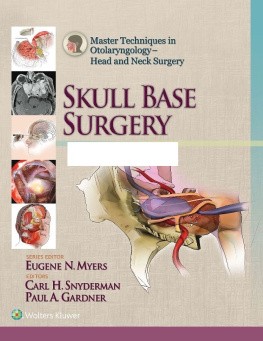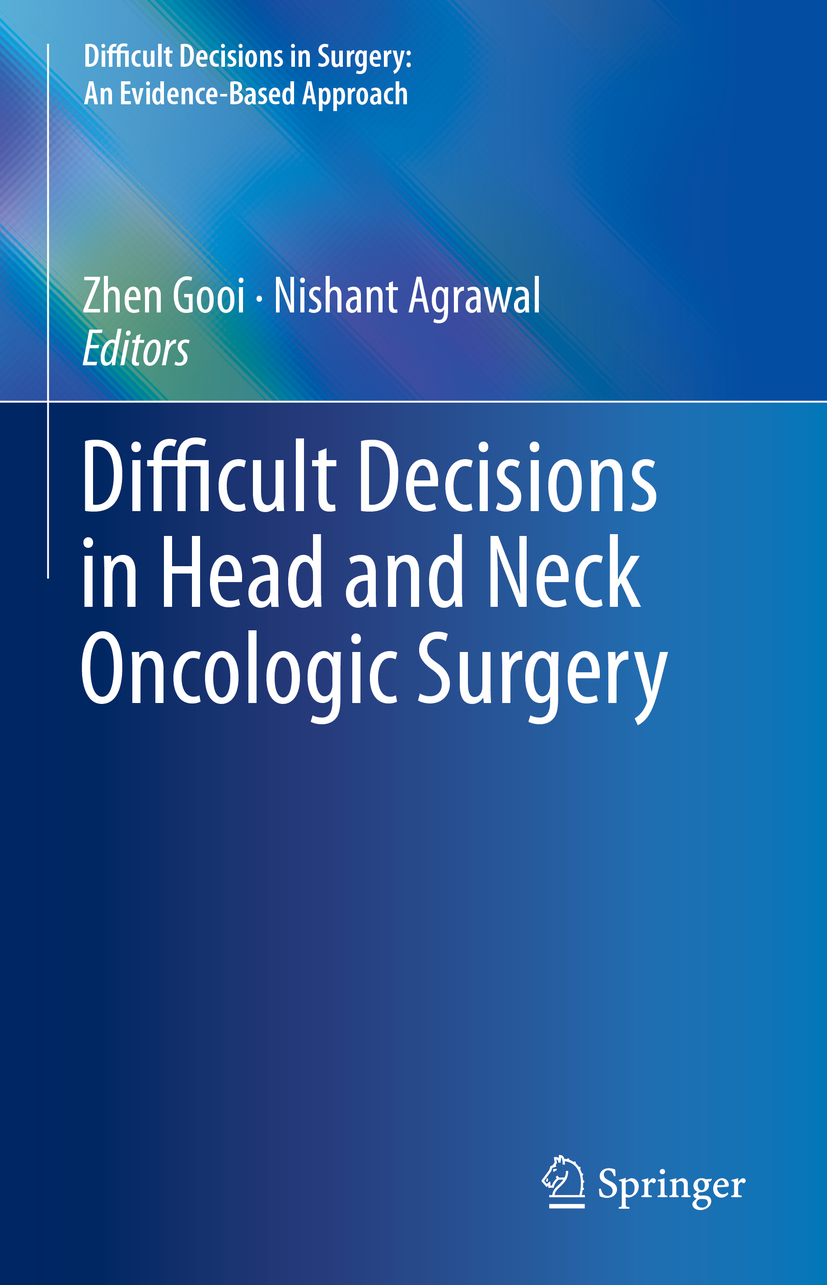Difficult Decisions in Surgery: An Evidence-Based Approach
Series Editor
Mark K. Ferguson
Department of Surgery, University of Chicago, Chicago, IL, USA
The complexity of decision making in any kind of surgery is growing exponentially. As new technology is introduced, physicians from nonsurgical specialties offer alternative and competing therapies for what was once the exclusive province of the surgeon. In addition, there is increasing knowledge regarding the efficacy of traditional surgical therapies. How to select among these varied and complex approaches is becoming increasingly difficult. These multi-authored books will contain brief chapters, each of which will be devoted to one or two specific questions or decisions that are difficult or controversial. They are intended as current and timely reference sources for practicing surgeons, surgeons in training, and educators that describe the recommended ideal approach, rather than customary care, in selected clinical situations.
More information about this series at http://www.springer.com/series/13361
Editors
Zhen Gooi and Nishant Agrawal
Difficult Decisions in Head and Neck Oncologic Surgery
Editors
Zhen Gooi
Department of Surgery, Section of Otolaryngology-Head and Neck Surgery, University of Chicago, Chicago, IL, USA
Nishant Agrawal
Department of Surgery, Section of Otolaryngology-Head and Neck Surgery, University of Chicago, Chicago, IL, USA
ISSN 2198-7750 e-ISSN 2198-7769
Difficult Decisions in Surgery: An Evidence-Based Approach
ISBN 978-3-030-15122-5 e-ISBN 978-3-030-15123-2
https://doi.org/10.1007/978-3-030-15123-2
Springer Nature Switzerland AG 2019
This work is subject to copyright. All rights are reserved by the Publisher, whether the whole or part of the material is concerned, specifically the rights of translation, reprinting, reuse of illustrations, recitation, broadcasting, reproduction on microfilms or in any other physical way, and transmission or information storage and retrieval, electronic adaptation, computer software, or by similar or dissimilar methodology now known or hereafter developed.
The use of general descriptive names, registered names, trademarks, service marks, etc. in this publication does not imply, even in the absence of a specific statement, that such names are exempt from the relevant protective laws and regulations and therefore free for general use.
The publisher, the authors, and the editors are safe to assume that the advice and information in this book are believed to be true and accurate at the date of publication. Neither the publisher nor the authors or the editors give a warranty, expressed or implied, with respect to the material contained herein or for any errors or omissions that may have been made. The publisher remains neutral with regard to jurisdictional claims in published maps and institutional affiliations.
This Springer imprint is published by the registered company Springer Nature Switzerland AG
The registered company address is: Gewerbestrasse 11, 6330 Cham, Switzerland
I dedicate this book to my beloved parents, Francis Gooi and Catherina Chin.
Zhen Gooi
I dedicate this book to my dear parents (Satesh and Rupa), amazing sister (Ruchika), and wonderful wife (Vidushi) for their eternal love. I would like to thank Ariv and Agustya for bringing endless joy to my life, putting up with my work schedule, and sharing me with my patients.
Nishant Agrawal
Foreword
I am very pleased to be asked to comment about this compilation because it is CRITICALLY IMPORTANT. Comprehensive texts are imperative to maintaining currency of the core specialty knowledge, but they sometimes fall short in presenting all sides of a clinical issue and determining the most rational and reasonable solution for the time. This book accomplishes that in a contemporary fashion, acknowledging the dynamism and ever-changing nature of modern clinical science and practice.
Much as similar topics are discussed at bedside rounds, head and neck tumor boards, lectures, conferences, and with patients, highly relevant diagnostic and therapeutic issues are presented and weighted for each topic, guiding the reader toward a rational and informed resolution to the problem. The textbook is truly an example of the power of Socratic thought!
I believe that the concepts presented herein are concise, objective, and absolutely relevant. An internationally acclaimed cohort of editors and authors share their insights in a logical way that can be easily followed by members of the multidisciplinary head and neck cancer team. Head and neck oncologists from all disciplines, fellows, residents, and students will all benefit significantly from this contribution resulting in improved patient care. Congratulations to the editors and authors!
Charles W. Cummings
Baltimore, MD, USA
Preface
We are excited to present, to the multidisciplinary head and neck oncology community, a new perspective on approaching some of the controversial clinical questions within our field. There is no doubt that the practice of head and neck surgical oncology is rewarding. We help our patients through a myriad of challenges, curing and restoring vital segments of their bodies that play an outsized role in defining their human experience. They entrust us, as their physicians, to guide them through navigating the complexity of their illness.
The questions posed in this book were deliberately chosen to reflect actual clinical scenarios that perhaps all of us have struggled with. Much of what we practice is a reflection of what our own mentors did when confronted with these scenarios. We greatly benefit from the wisdom and experience of our predecessors, but ultimately advancing our field and the care of our patients mandates us to critically examine how we can improve our outcomes with evidence-based medicine.
To this end we have asked our internationally acclaimed authors to critically assess the most current scientific literature in their areas of expertise and to present their interpretation of the evidence according to the PICO ( P population, I intervention, C comparison, O outcome) format and make their recommendations based on the GRADE (Grading of Recommendations Assessment, Development, and Evaluation) criteria. This structured method of analysis aims to provide the reader a more nuanced understanding of the topic at hand and to identify areas of improvement in their own individual practices.
The selection of authors in this book was deliberately chosen to reflect the global nature of head and neck cancer. To this end we are especially honored to have the perspective of our internationally respected colleagues from Asia, South America, Africa, Australia, the Middle East, and North America. We are grateful to all our colleagues who have taken time out of their busy schedules to provide insightful analysis of their topics. We hope that this text will provide the reader inspiration to advance their own clinical practices based on available scientific evidence.
Zhen Gooi
Nishant Agrawal
Chicago, IL Chicago, IL

